Bosch 800 Series 36 in. 21 cu. ft. French 4 Door Refrigerator in Stainless Steel with Dual Compressor, Counter-Depth
FarmFresh System™ to keep your food fresher, longer. FlexBar™ organizes your fridge in ways never done before. Drip-free interior water dispenser provides a streamlined design.
Introducing the revolutionary, Bosch counter-depth refrigerators, with a streamlined interior and advanced freshness system designed to keep the ingredients you love fresher longer. Enjoy less food waste, and more thoughtful design. Our revolutionary FarmFresh System combines four innovative technologies designed to take food preservation to the next level, while minimizing food waste. Working in harmony, the (1) VitaFreshPro, (2) FreshProtect Ethylene Filter, (3) MultiAirFlow, and (4) AirFresh Filter provide the optimal environment for your food storage needs. An industry first, VitaFreshPro automatically balances both temperature and humidity. From produce to meats to cheeses, pre-programmed settings calibrate the optimal environment, removing the guesswork from food storage. FreshProtect absorbs naturally occurring ethylene to slow ripening, so produce stays fresher, longer. MultiAirFlow and AirFreshFilter work together to keep the temperature in your entire fridge consistent while reducing odors. Its refrigeration, reinvented.
- Thoughtfully tucked away is the internal water dispenser for refreshing, pure water at the touch of a button, or push of a nozzle, without disrupting the exterior design in
- The advanced ice maker creates pyramid-shaped ice straight from your freezer, Fully accessible via a pull-out bin and ice scoop
- Experience crisp, beautiful LED illumination from corner to corner
- This freestanding refrigerator sits flush with the countertop, features hidden hinges, and discreet tucked away feet, all to give you a true built-in look and feel
- The revolutionary FarmFresh System combines four innovative technologies designed to take food preservation to the next level, while minimizing food waste
- FarmFresh System keeps your food fresh up to 3x longer, for less food wasted.* — *As compared to a Bosch refrigerator without FarmFresh System. Results may vary among different foods*
- Store oversized platters with ease until youre ready to serve them, or store snacks for quick access and easy visibility
- Keep your kitchen looking beautiful with an easy to clean stainless steel exterior
- Home Connect lets you easily manage your Bosch refrigerator from the convenience of your smartphone or tablet
- Premium and modern touch control display is strategically placed for easy accessibility, and allows you to control the features of your refrigerator with the touch of a button
- Dual compressors and evaporators offer precise cooling and humidity control, while reducing odor transfer
- Energy Star
Additional information
| Depth (Excluding Handles) | 28.625 |
|---|---|
| Depth (Including Handles) | 30.91 |
| Depth (Less Door) | 24 |
| Depth With Door Open 90 Degrees (In) | 43.38 |
| Height to Top of Door Hinge (in.) | 72 |
| Height to Top of Refrigerator (in.) | 71.5 |
| Product Depth x Height x Width (in.) | 28.5 x 72 x 35.625 |
| Refrigerator Width (In.) | 35.625 |
| Certifications and Listings | CSA Listed,Energy Star,UL Listed |
| Manufacturer Warranty | 1 Year Limited |

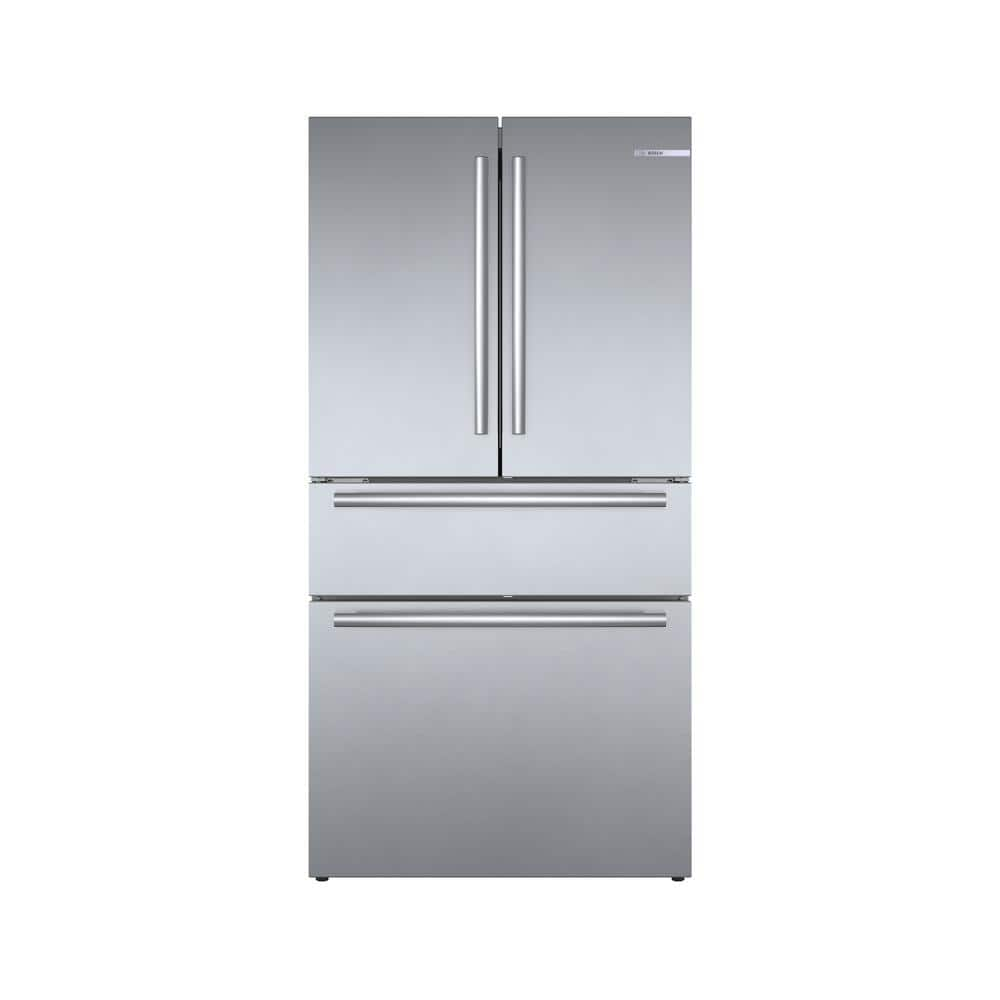
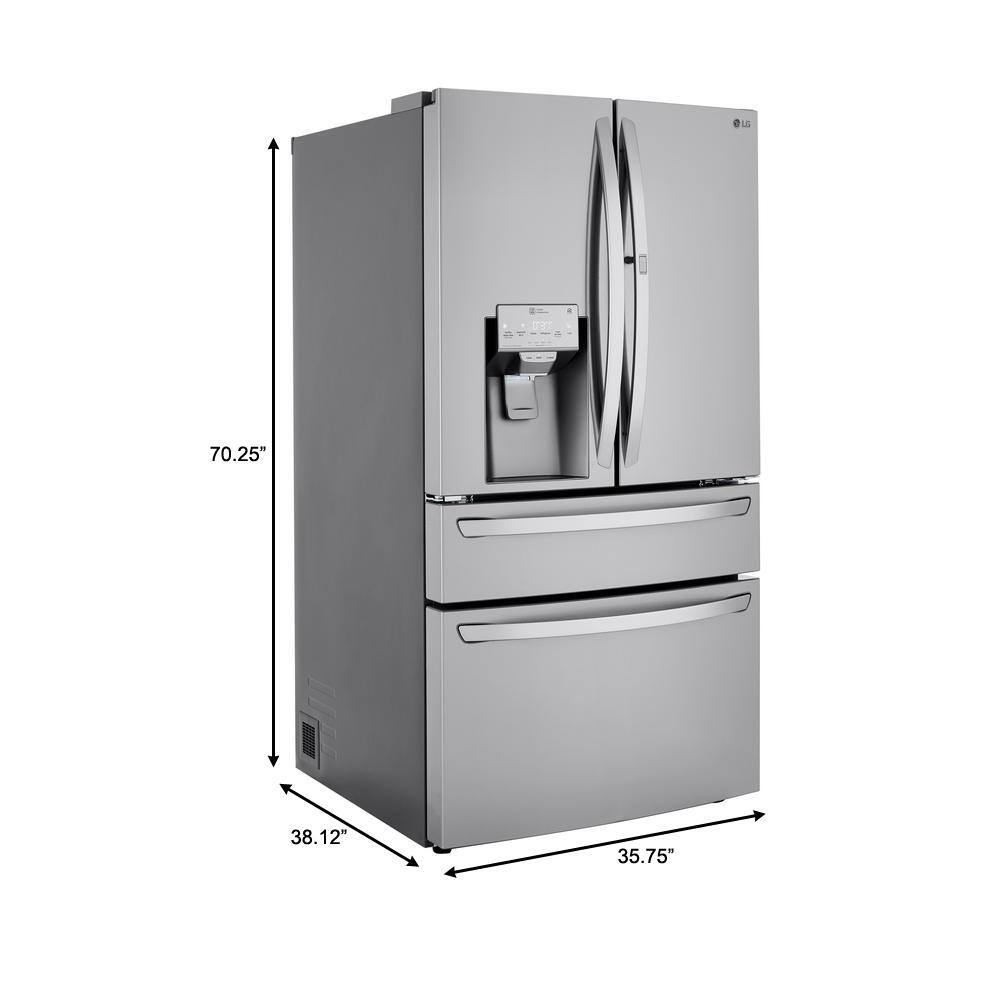
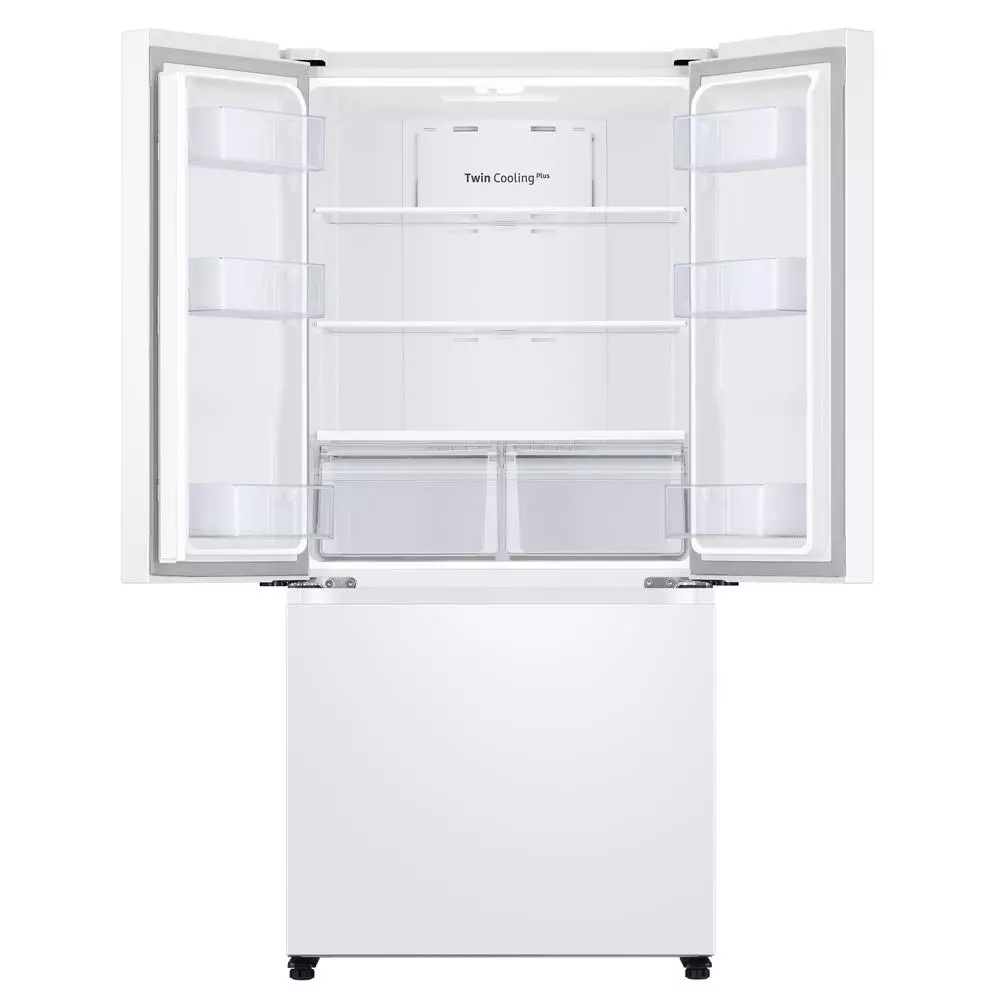
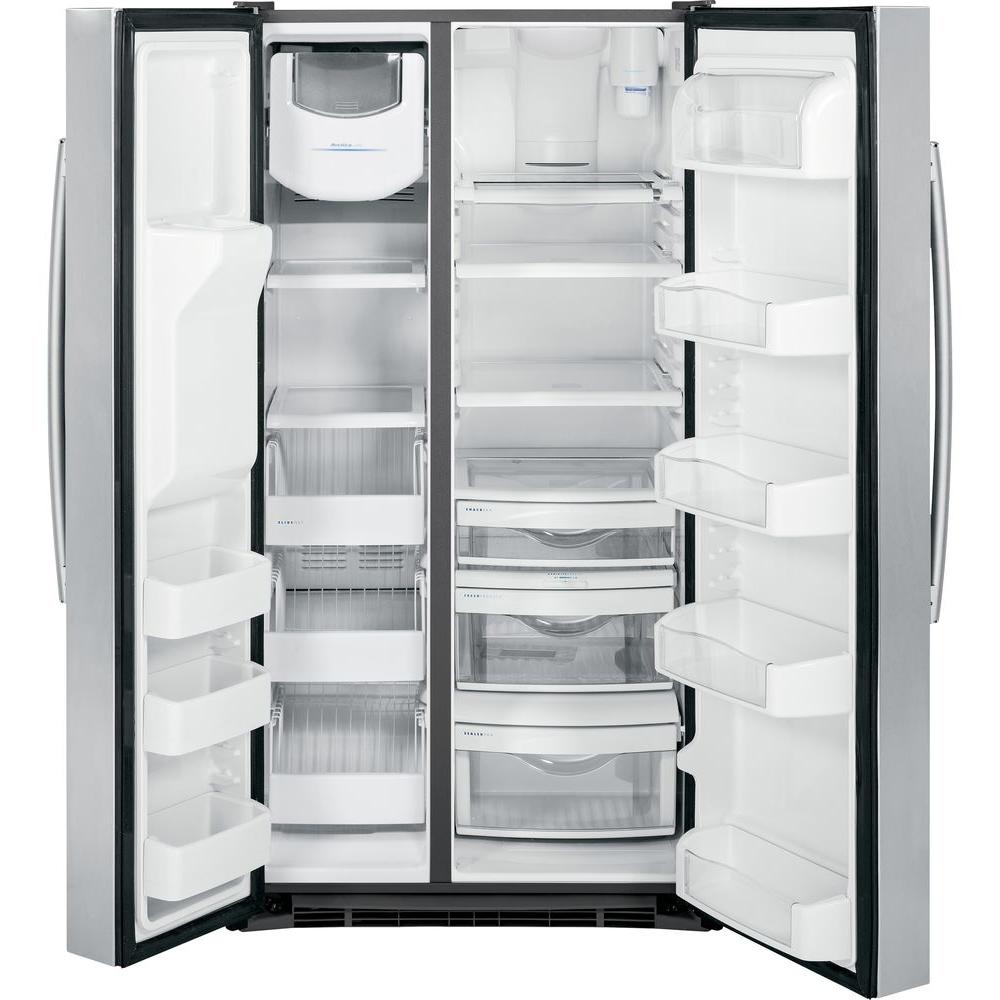
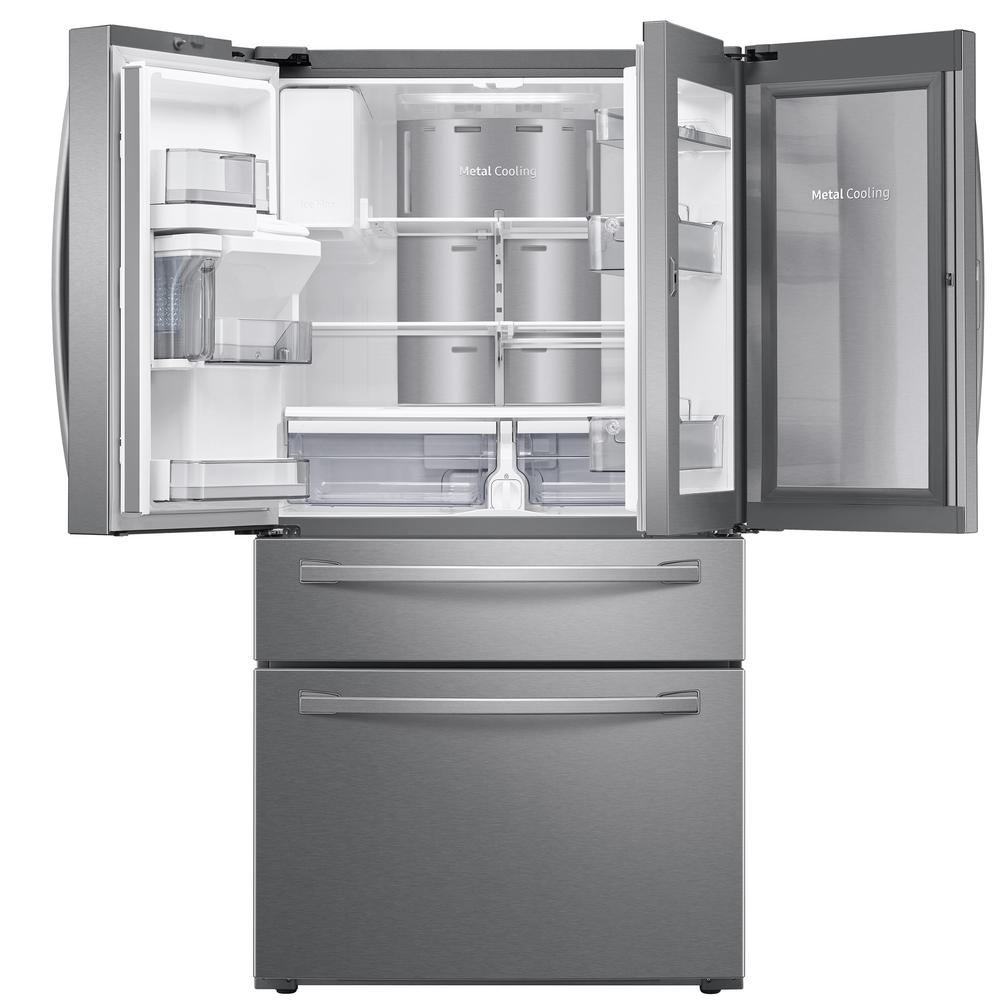
by Alex
Every time I open this refrigerator is an experience. The lights fade in and you’re greeted to a cool blast of crisp air. Your groceries greet you invitingly to julienne, mince, sauté or flambé.
by John
when our horrible 9 foot tall Viking refridgerator (that came with our condo) died, we bought this Bosch – and I love it! never had a cold water dispenser before- and I love drinking water! the third drawer for fruits and salds takes a little getting used to, but it’s great. and the freezer is twice the size of any other one I’ve had. Highly recommend.
by Carol
I am really enjoying my new Bosh refrigerator 800 series. It looks so classy and smart! It’s understated elegance is so eye catching in the kitchen! I’ve always wanted one! I like the feature that the engineering figured out to put 2 compressers in the unit, which allows for your fresh vegetables and fruits to last much longer becauase it’s compresser is designed especially for fresh foods allowing more moisture….and the Freezer needs a dryer environment. I love the ample ice maker where you can see the ice and get as much as you need quickly. The space separation is so smartly designed as well….allowing you to find things much quicker. I always have more than enough room in that refrigerator. It’s a BOSH!
by Shua
Lightning killed our old refrigerator so did some looking and settled on this counter depth Bosch, partially because we love our Bosch dishwasher. Installation was easy, set up easy and it works. We may remove one shelf to have more room for tall items, but it’s our choice. No complaints.
by Mike
My wife has been eying and wanting this refrigerator for almost a year. It was much pricier than we were going to spend but after having it now for a couple of months it is worth the price and weight. We were tired of the water and ice dispensers on the fron of the refrigerator and wanted clean lines. The ice make inside is amazing so far. Time will tell on that. My wife loves that the stainless steel can be wiped with a dry towel. We bought a counter depth model.
by Mary
This beauty replaced an 15 year old Viking Professional (unable get parts to fix anymore). I did a lot of legwork and comparison shopping. Each time, the Bosch came out as best. After ordering from a local store, I had to wait a somewhat lengthy time but boy, was it worth it?? Yes. I love everything about this appliance although on delivery my husband was skeptical. We had to do a little work to make it fit width wise (despite dimensions being the same as my old one) and it is about 8″ or so shorter. (I can fill that empty gap with a plant maybe) Hubby did not think it would fit our needs I had faith it would. I was right of course, when everything was put in place after adjusting the shelves s little, everything fit in perfectly and still with much room to spare. Hubby was shocked! We both love the way it looks in our kitchen, it is so spacious inside it’s like a Mary Poppins fridge. The middle drawer truly keeps food fresher for longer. Such a fabulous feature. Freezer is plenty roomy. The ice cubes it makes are the perfect size and it stops producing more ice if it’s not needed. As soon as you use some though, it replaces it. I absolutely love my fridge freezer. If you are in the position of needing to buy a free standing 36″ fridge freezer, look no more. You’ve hit the jackpot with this one!!
by Teaser
I am very pleased with my new fridge. The lighting inside is fantastic, the overall look is great and the function and storage organization is the best i’ve had. With multiple compartments, shelves, etc., it’s an effective use of available space. Great product!
by Muffin
The Bosch refrigerator is very well made and looks awesome in my kitchen.